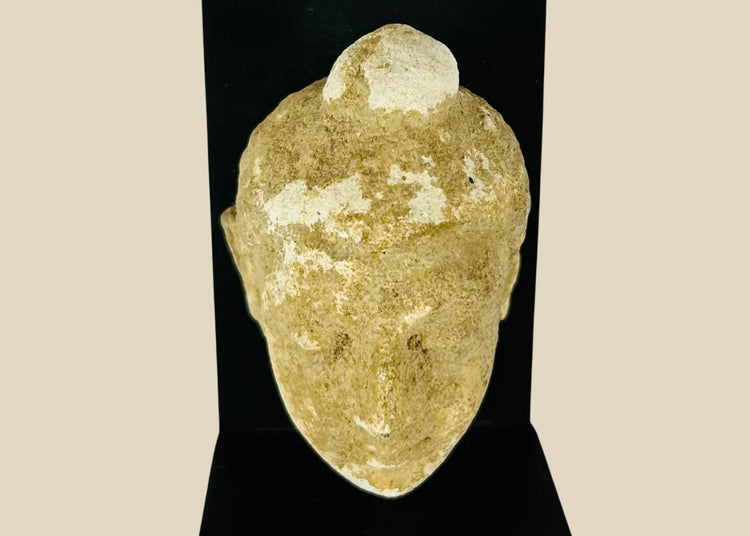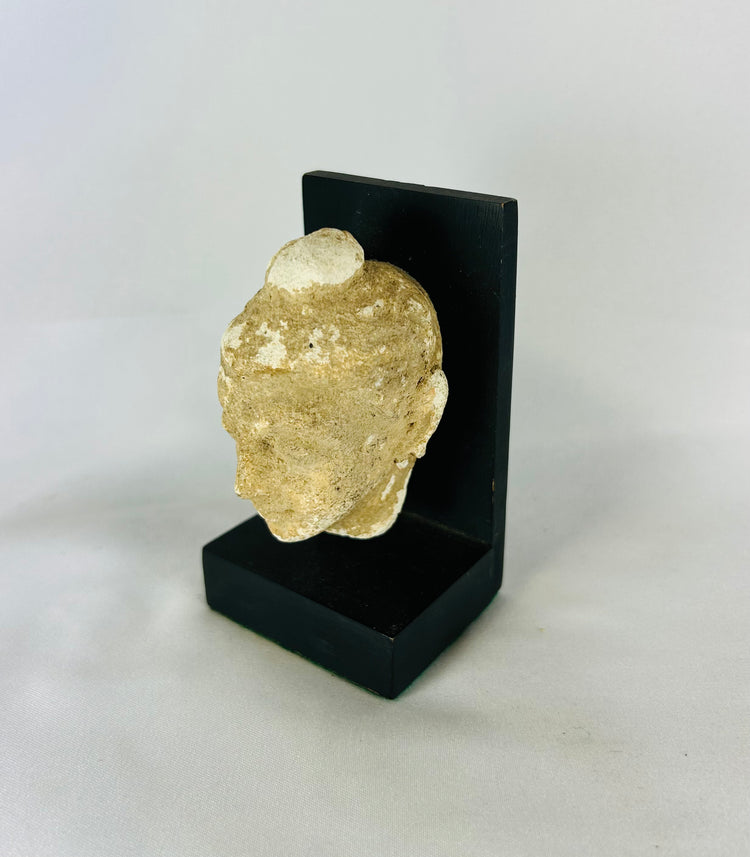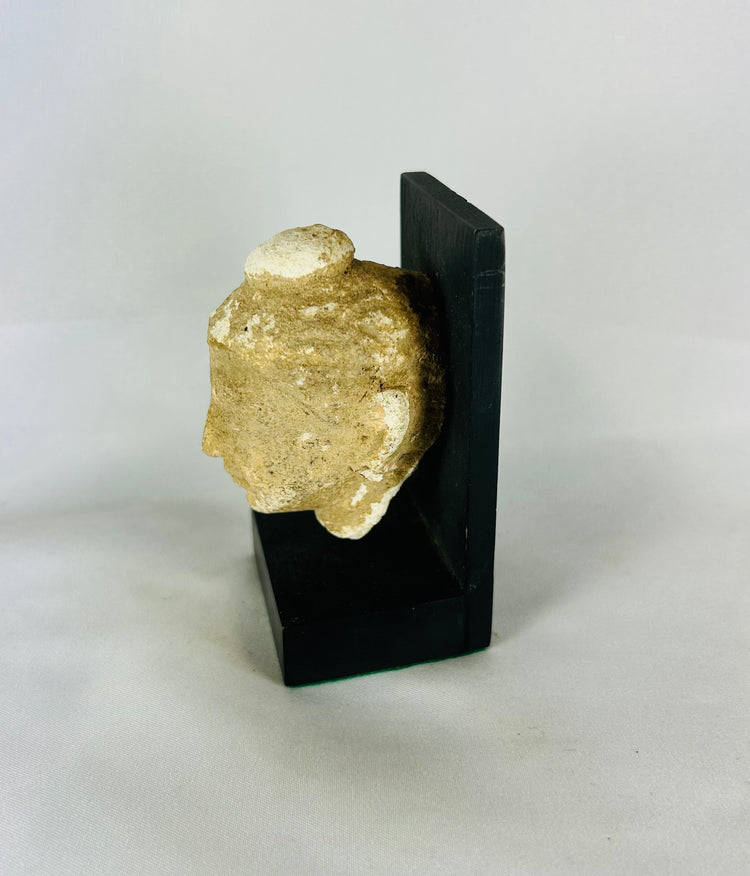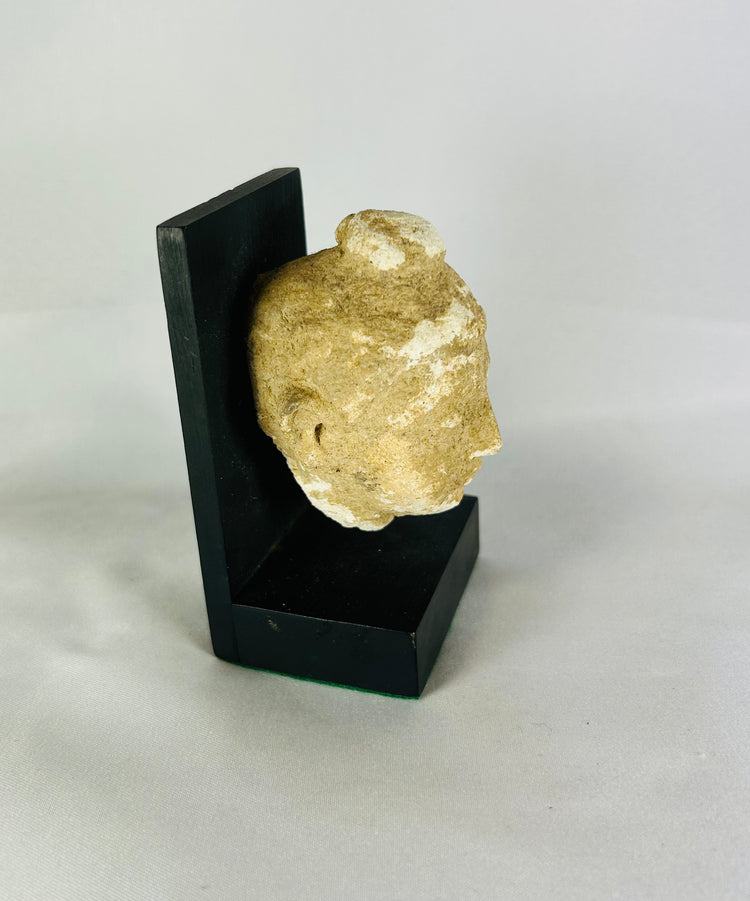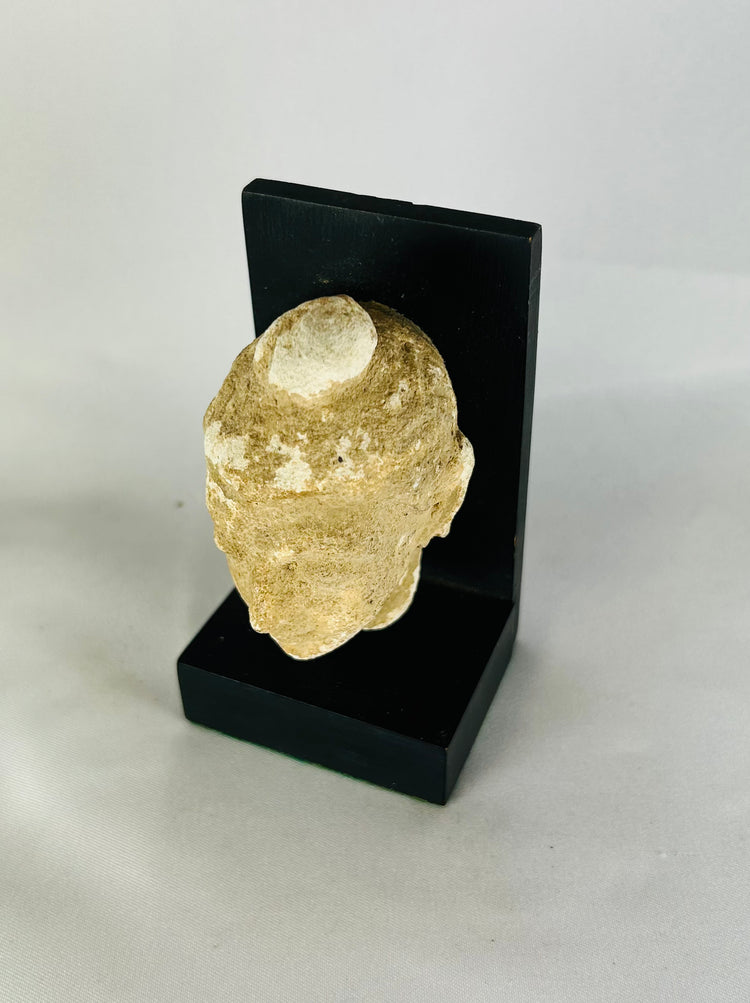Head of Buddha | Ancient Region of Gandhara | 3rd - 4th Century AD
Description
More
Less
Historical Context & Origin
Region: Gandhara (present-day northwest Pakistan and northeast Afghanistan)
Material: Carved schist/stone with surface patina
Period: 3rd–4th Century CE
Description
An exquisite Buddha head carved in the Greco-Buddhist style of Gandhara, blending Hellenistic realism with Indian spiritual iconography. The serene expression is marked by delicately sculpted facial contours, closed eyes, and finely arched brows, emphasizing meditative focus and tranquility. The ushnisha (cranial protuberance) crowns the head, symbolizing the Buddha’s spiritual wisdom and transcendent knowledge.
Despite natural wear, fine remnants of original detailing remain visible, testifying to the sculpture’s great antiquity and long historical journey. Mounted on a modern black display stand for stability and presentation.
Features
- Carved in the distinctive Greco-Buddhist style of Gandhara
- Serene expression with delicately modeled facial features
- Closed eyes and arched brows symbolizing meditation and inner peace
- Ushnisha (cranial protuberance) representing wisdom and enlightenment
- Fine remnants of original detailing preserved beneath surface patina
- Mounted on a modern black stand for display
Cultural Significance
The Gandharan Kingdom (1st century BCE – 5th century CE) was a pivotal center of Buddhist philosophy, trade, and art along the Silk Road. Greek sculptural techniques, introduced after the campaigns of Alexander the Great, merged with Indian religious traditions to create lifelike portrayals of the Buddha, characterized by classical drapery and realistic proportions.
This artistic tradition deeply influenced Buddhist iconography across Central Asia and into China, shaping visual representations of the Buddha for centuries.
Condition
Excellent archaeological condition for its age. Natural surface wear, patina, and minor losses consistent with great antiquity. Stable and well-preserved, mounted securely for modern display.
Dimensions (approximate)
Height: 3.5 in
Width: 2 in
Depth: 1.75 in
Age
3rd–4th Century CE, Gandhara region
Learn More
Deepen your understanding of Gandharan Buddhist art and the origins of this extraordinary sculptural tradition: Head of the Buddha – Gandhara (Smarthistory)
Discover more sacred statues, ritual objects, and spiritual artifacts from across Asia:
Buddhist & Hindu Relics and Sacred Statues – Relic And Rarity
Description
Historical Context & Origin
Region: Gandhara (present-day northwest Pakistan and northeast Afghanistan)
Material: Carved schist/stone with surface patina
Period: 3rd–4th Century CE
Description
An exquisite Buddha head carved in the Greco-Buddhist style of Gandhara, blending Hellenistic realism with Indian spiritual iconography. The serene expression is marked by delicately sculpted facial contours, closed eyes, and finely arched brows, emphasizing meditative focus and tranquility. The ushnisha (cranial protuberance) crowns the head, symbolizing the Buddha’s spiritual wisdom and transcendent knowledge.
Despite natural wear, fine remnants of original detailing remain visible, testifying to the sculpture’s great antiquity and long historical journey. Mounted on a modern black display stand for stability and presentation.
Features
- Carved in the distinctive Greco-Buddhist style of Gandhara
- Serene expression with delicately modeled facial features
- Closed eyes and arched brows symbolizing meditation and inner peace
- Ushnisha (cranial protuberance) representing wisdom and enlightenment
- Fine remnants of original detailing preserved beneath surface patina
- Mounted on a modern black stand for display
Cultural Significance
The Gandharan Kingdom (1st century BCE – 5th century CE) was a pivotal center of Buddhist philosophy, trade, and art along the Silk Road. Greek sculptural techniques, introduced after the campaigns of Alexander the Great, merged with Indian religious traditions to create lifelike portrayals of the Buddha, characterized by classical drapery and realistic proportions.
This artistic tradition deeply influenced Buddhist iconography across Central Asia and into China, shaping visual representations of the Buddha for centuries.
Condition
Excellent archaeological condition for its age. Natural surface wear, patina, and minor losses consistent with great antiquity. Stable and well-preserved, mounted securely for modern display.
Dimensions (approximate)
Height: 3.5 in
Width: 2 in
Depth: 1.75 in
Age
3rd–4th Century CE, Gandhara region
Learn More
Deepen your understanding of Gandharan Buddhist art and the origins of this extraordinary sculptural tradition: Head of the Buddha – Gandhara (Smarthistory)
Discover more sacred statues, ritual objects, and spiritual artifacts from across Asia:
Buddhist & Hindu Relics and Sacred Statues – Relic And Rarity
You May Also Like




















